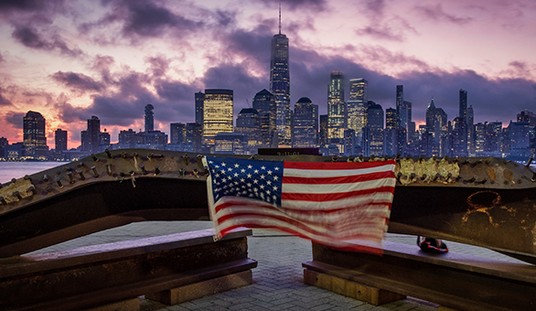GETTYSBURG, Pa. -- In 1863, eleven major roads converged on this town. Which is why history did, too.
The founding of the American nation was the hinge of world history: Popular sovereignty would have its day. The collision of armies here was the hinge of American history: The nation would long endure. Which is why 200 or so generous private citizens recently gathered here for a quiet celebration of their gift to the nation -- a sparkling new Museum and Visitor Center that instructs and inspires.
In 1997, Bob Kinsley, a contractor in York, Pa., decided that something should be done about the decrepit facilities for explaining the battle and displaying its artifacts. His determination survived more than 50 public meetings and three congressional hearings, and two years of resistance from rival bidders, some Gettysburg merchants, and people who think the private sector takes up space that the public sector should fill.
He started the Gettysburg Foundation and hired Bob Wilburn, who had administered Colonial Williamsburg. Wilburn raised the $103 million that built the new center, which includes a theater for the scene-setting film narrated by Morgan Freeman, and the Cyclorama, the circular painting that depicts Pickett's Charge on the battle's third and final day. Americans today are so constantly pummeled by the sensory blitzkrieg -- the sights and sounds of graphic journalism and entertainment -- they can hardly fathom how the Cyclorama dazzled viewers when displayed in 1884. Magnificently restored and presented, it is still stunning.
The battle here was fought in and around a town that continued to grow. At one point there was a Stuckey's restaurant where the second day of fighting raged. The Gettysburg Foundation's work includes recovering battle sites from urban encroachments.
It recently bought the 80-acre Spangler farm. The house, which was behind Union lines, was used as a hospital for both sides. Gen. Lewis Armistead of Virginia died there. He received his mortal wounds during Pickett's Charge, leading the deepest penetration of Union lines on Cemetery Ridge at the spot now known as "the high-water mark of the Confederacy."
Recommended
Recently, a Gold Star mother finally visited Gettysburg, after driving by it often en route to visit the Arlington, Va., grave of her son, who was killed in Iraq. She was especially moved by these words from a Gettysburg newspaper published four days after the battle: "Every name ... is a lightning stroke to some heart, and breaks like thunder over some home, and falls a long black shadow upon some hearthstone." Gettysburg still stirs, but not as it used to, or should.
In "Intruder in the Dust," William Faulkner wrote: "For every Southern boy fourteen years old, not once but whenever he wants it, there is the instant when it's still not yet two o'clock on that July afternoon in 1863, the brigades are in position behind the rail fence, the guns are laid and ready in the woods and the furled flags are already loosened to break out and Pickett himself with his long oiled ringlets. ... " Faulkner's sentence continued; you have just read less than half of it. To continue in his style:
Ours would be a better nation if boys and girls of all regions, and particularly the many high school and even college graduates who cannot place the Civil War in the correct half-century, could be moved, as large numbers of Americans used to be, by the names of Gettysburg battlefield sites, such as Devil's Den, the Peach Orchard, the Wheatfield, Culp's Hill and Little Round Top, instead of being like the visitor here who said it is amazing that so many great battles, such as Antietam and Chickamauga and Shiloh, occurred on Park Service land; and another visitor who doubted that the fighting here really was fierce because there are no bullet marks on the monuments.
Ten years ago, this column asserted that disrespect for the national patrimony of Civil War battlefields should be a hanging offense, and said: "Given that the vast majority of Americans have never heard a shot fired in anger, the imaginative presentation of military history in a new facility here is vital, lest rising generations have no sense of the sacrifices of which they are beneficiaries." Today, at an embarrassing moment of multiplying public futilities, private efforts, in collaboration with the National Park Service, have done something resoundingly right that will help a normally amnesiac nation to long remember.
























Join the conversation as a VIP Member